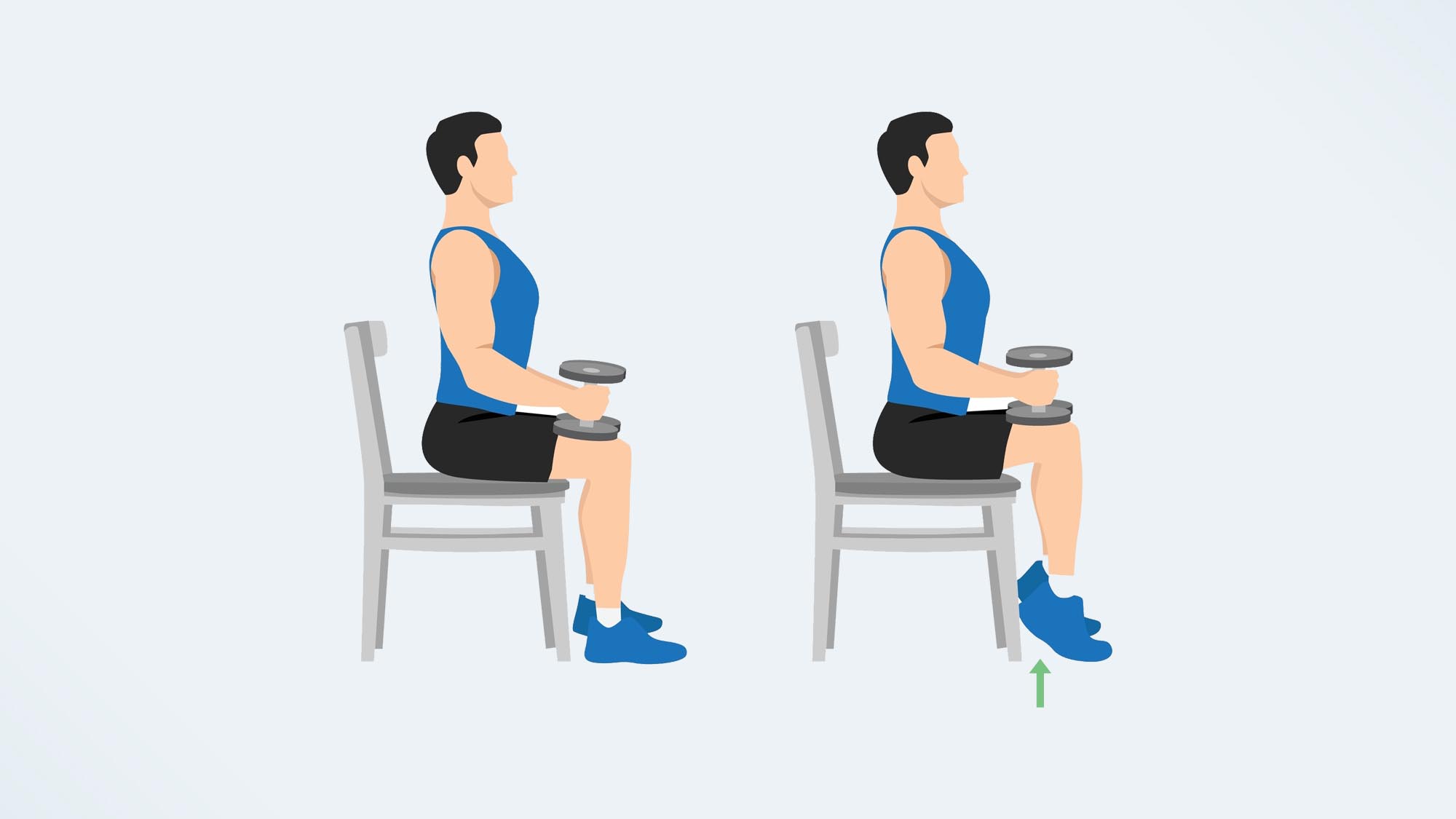I did 100 seated calf raises every day for a week — here’s what happened
Is this simple-looking exercise the secret to a strong lower body?

When training the lower body, the calves are often the most neglected muscle group. While squats and lunges will target the calf muscles to an extent, they don’t work them as hard as exercises such as calf raises, which isolate the calf muscles.
You can read what happened when I did calf raises every day for a week here, but unlike the standing version, doing the exercise sitting down takes the upper body, abs, and balance out of the equation, making it well-suited to beginners, pregnant women who might need a little extra support, and those recovering from an injury. To find out more, I added it to my routine every day for a week — read on to find out what happened.
Whether you’re a runner, a football player, or a CrossFit fanatic, working on your calf muscles is important. Your calf muscles absorb the impact when you’re running or walking and propel you forward, as well as allowing you to jump, rotate your ankle, and flex your foot.
As a reminder, what works for me might not be right for you and your body. If you’re a complete beginner or you’re returning to exercise following an injury, it’s a good idea to check with a personal trainer to ensure you’re getting your form right. When I’m not doing challenges for Tom’s Guide, my schedule involves around four to five runs a week, as well as a couple of strength training sessions, and the odd Pilates or yoga class chucked in for good measure.
How to do a seated calf raise
Let’s start by taking a look at how you do a seated calf raise with good form. You can do this exercise using a calf raise machine at the gym, but if your gym doesn’t have one, or you’re still working out at home, all you’ll need is a sturdy chair or exercise bench. You can do the exercise with just your body weight, or add weight using one of the best adjustable dumbbells, one of the best kettlebells, or a weight plate if you want to increase the intensity. For the instructions below, I’ll be focusing on how to do the variety without the machine in the gym:

- Start by sitting on the edge of a sturdy chair or bench, with your feet flat on the floor
- Engage your abs and sit up tall, keeping your back straight
- Place a dumbbell or weight on each knee, or both knees, and press from the balls of your feet to raise your heels up onto your tip toes
- Pause at the top — you should feel this in your calf muscles
- Slowly, and with control, lower your heels back down to the ground. That’s one rep.
The key to this exercise is to move slowly, and with control, especially as you lower your heels back down to the ground in the second half of this movement. Rushing the exercise will make it a lot less effective. I think about moving my heels down through honey to stop myself from dropping them to the floor.
I did seated calf raises every day for a week — here’s what happened
Are seated calf raises the secret to stronger legs? Here’s what happened when I did them for a week:
Sign up to get the BEST of Tom's Guide direct to your inbox.
Get instant access to breaking news, the hottest reviews, great deals and helpful tips.
I found it easier to move with good form
Compared to the standing variation of this exercise, removing the elements of balance, and upper body strength by holding a dumbbell in each hand, I found that doing the exercise seated really allowed me to move with good form. I focused on moving with a full range of motion and keeping things as slow and controlled as I possibly could.
As with a lot of these challenges, I found that as the week progressed, and I got more comfortable with the exercise, I tended to rush a little. To prevent this, I did five sets of 20 reps, with a slight break in between to help me reset. On other days, I staggered my sets throughout my working day — a good way to keep me moving as I worked.
I had to work on my posture
As the week went on, I tried to up the intensity by increasing the weight of the dumbbells on my legs as I did the calf raises. I asked a personal trainer friend to watch my form in the gym, and she told me to be mindful of my posture as the weight increased.
One of the biggest form errors when doing seated calf raises is leaning your torso back slightly — this can put pressure on your lower back. Instead, think about engaging your abs and keeping your back straight.
I felt this one in my calves
After a week of calf raises, I could really feel this move in my lower body, and I’ll definitely be keeping calf raises, both seated and standing, in my routine going forward. I’d definitely recommend the seated variation to those who are new to the move, as it encourages you to move with a full range of motion.
Of course, I’m not going to see huge gains in a week — the human body doesn’t work like that, but I can definitely see how adding calf exercises into my workouts could help me run faster and (hopefully) ward off lower leg issues that might keep me from the start line.
More from Tom's Guide

Jane McGuire is Tom's Guide's Fitness editor, which means she looks after everything fitness related - from running gear to yoga mats. An avid runner, Jane has tested and reviewed fitness products for the past five years, so knows what to look for when finding a good running watch or a pair of shorts with pockets big enough for your smartphone. When she's not pounding the pavements, you'll find Jane striding round the Surrey Hills, taking far too many photos of her puppy.
